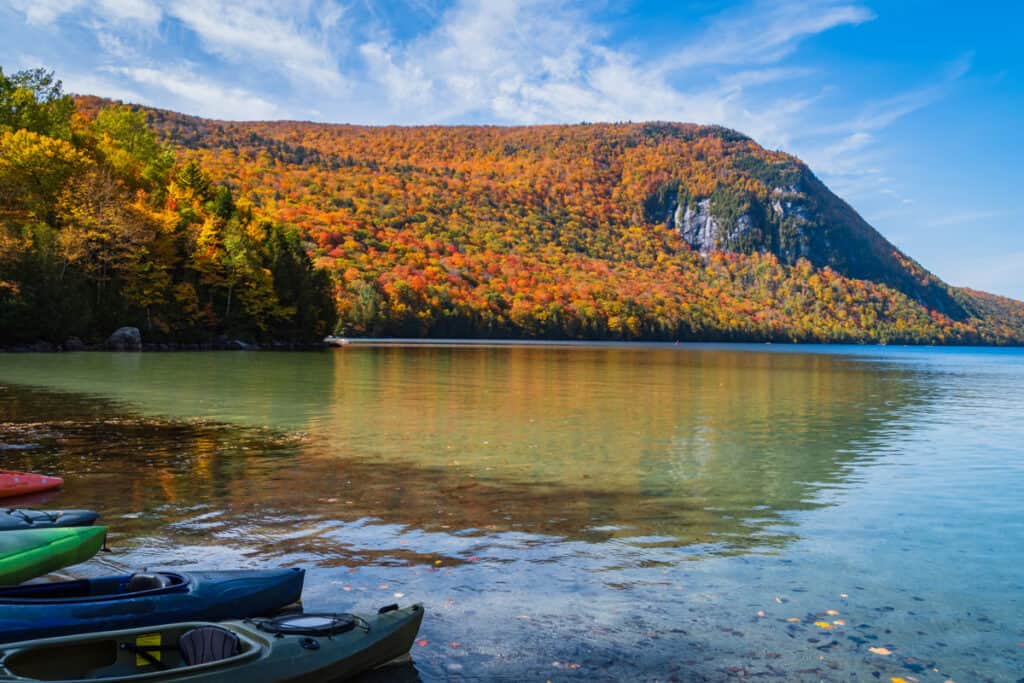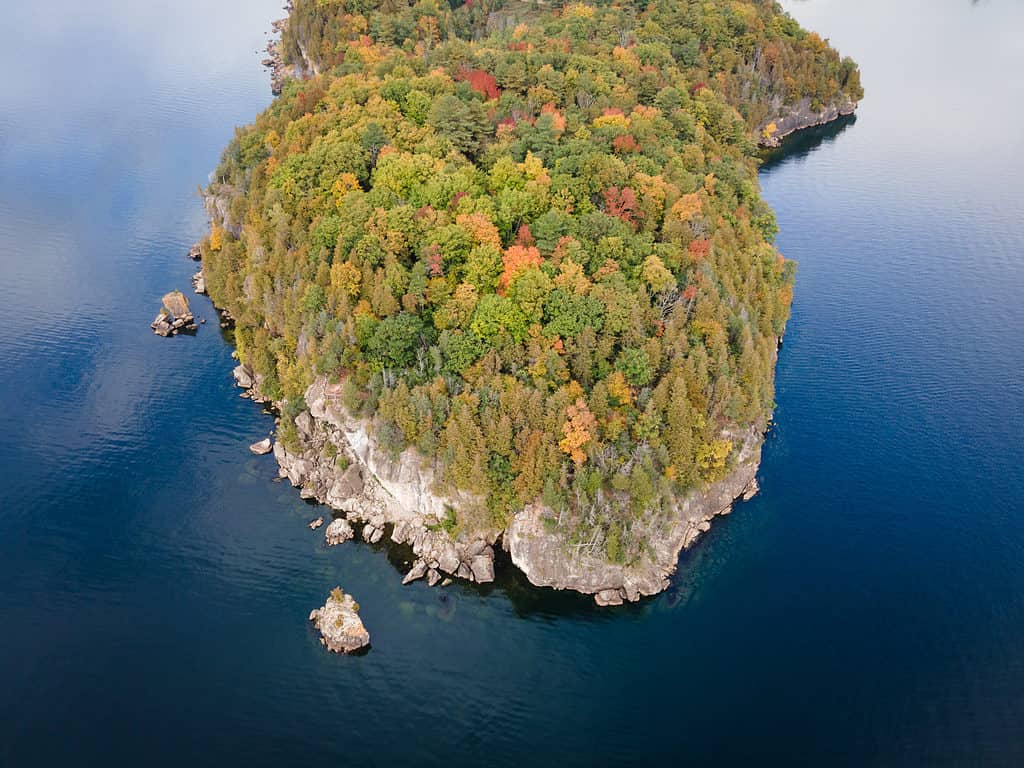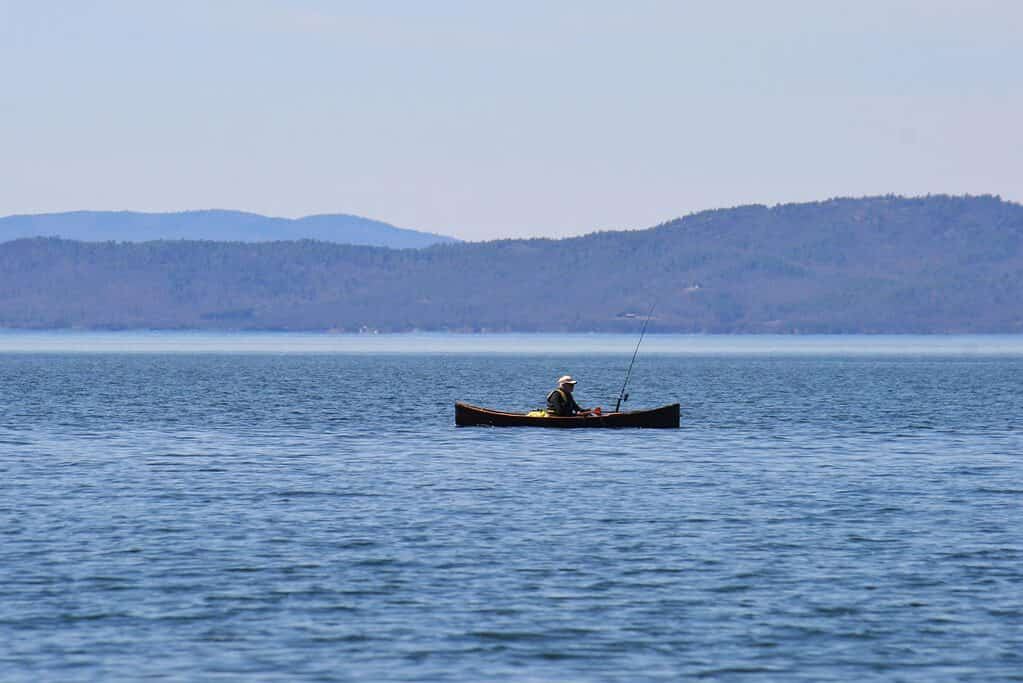Vermont is home to some good-sized lakes including Lake Champlain on the border with New York, Lake Bomoseen, which is the biggest lake entirely in the state, and Lake Memphremagog which crosses over into Canada. These picturesque lakes are the backdrop to some of the most beautiful scenery in Vermont.
Smaller lakes are scattered across the landscape as well, creating ecosystems for a variety of plants and wildlife. When you look at some of the deepest lakes in Vermont you may be surprised that sometimes smaller lakes can be unusually deep. Some fish species prefer cool deep lakes like some of the northern lakes in Vermont. Let’s find out all about the deepest lake in Vermont.
What Is the Deepest Lake in Vermont?
The deepest lake in Vermont is Lake Willoughby. Lake Willoughby is the deepest lake entirely in the state of Vermont. The southern half of the lake is surrounded by the mixed green forest of the Willoughby State Forest. Two small beaches on the lake have boat access and a swimming area. On the east side is the town of Westmore and the southern end hosts the White Caps Campground in the State Forest. Another larger campground is just north of the lake, the Will-o-wood Campground.

Lake Willoughby is the deepest lake entirely in the state of Vermont with a depth of 320 feet.
©iStock.com/vermontalm

Where Is Lake Willoughby Located on a Map?
Lake Willoughby is in Westmore in Orleans County. It takes fewer than 40 minutes to drive north to the Canadian border and roughly the same distance south to St. Johnsbury. It is east of Crystal Lake and west of Long Pond.
How Deep Is the Deepest Lake in Vermont?
The deepest lake in Vermont is around 320 feet deep. Lake Willoughby was carved out by glaciers leaving the high rocky shoreline and the deepest grooves at the bottom of the lake. Visitors often say the lake looks like a Norwegian Fjord. The lake is only about a mile wide, but five miles long from north to south.
How Is the Fishing on Lake Willoughby?
The fishing on Lake Willoughby is excellent, especially for lake trout. Lake trout love cool deep water and the trout in Lake Willoughby can grow to be trophy sized. The biggest lake trout ever caught was reeled in from Lake Willoughby. Shawn Dutil holds the state record with a 35-pound 3.2 ounce that he caught back in 2003. The largest producer of lake trout in Vermont is Lake Champlain.

Lake trout love the cool deep water in Lake Willoughby.
©iStock.com/LaSalle-Photo
Is Lake Champlain One of the Deepest Lakes in Vermont?
Yes. Lake Champlain is the deepest lake in Vermont that is not entirely in the state. Lake Champlain is on the border with New York and it extends into Canada. At its deepest point, Lake Champlain is 400 feet deep. Lake Champlain is the biggest lake in Vermont with a surface area of 278,400. Lake Champlain is not a man-made lake, it is a natural lake also formed by glaciers. While Lake Willoughby is 5 miles long, Lake Champlain is 120 miles long, quite a bit larger!

Lake Champlain is the deepest lake in Vermont that is not entirely in the state, with a depth of 400 feet.
©iStock.com/Eifel Kreutz
How Is the Fishing on Lake Champlain?
Excellent! We already mentioned how Lake Champlain has the most lake trout in the state, and trophy-sized ones at that. Besides lake trout, bass fishing is popular on the lake with smallmouth bass, largemouth bass, and rock bass. You will also find northern pike, yellow perch, white perch, bluegills, and brown bullheads.
Are There Any State Fishing Records from Lake Champlain?
Yes! There are more records set on Lake Champlain than any other lake in the state. The biggest Atlantic landlocked salmon was caught on October 18, 1994, by Brian Latulippe. His record breaker weighed in at 12 pounds 10.4 ounces. A record-breaking walleye was reeled in by Richard Levesque on February 10, 2010. The walleye was 14 pounds 8.8 ounces and 32.50 inches.
Other state record fish include the biggest American eel (6 pounds 4 ounces), rock bass (2 pounds), Burbot (8 pounds 13 ounces), Cisco (1 pound 1.44 ounces), freshwater drum (25 pounds 8.6 ounces), longnose gar (18 pounds 12 ounces), mooneye (2 pounds 7 ounces), white perch (2 pounds 9.3 ounces), pike-pickerel hybrid (8 pounds 7 ounces), sauger (3 pounds 2.5 ounces), rainbow smelt (0 pounds 12 ounces), and lake whitefish (9 pounds 7 ounces). One of the best places for fishing in Vermont!

There are more fishing records set on Lake Champlain than any other lake in the state.
©Ilir Hasa/Shutterstock.com
Is There a Sea Monster in Lake Champlain?
Yes … maybe? There is a legend of a sea monster in Lake Champlain although concrete evidence is still not available. The lake claims to be “home to the oldest known fossil reef in the world (450-480 million years old” and it is believed that one of the oldest dinosaurs still lives in the depths of the lake. A sea monster similar to the Loch Ness Monster is rumored to still swim along the deepest parts of Lake Champlain. “Champ,” as he is called, was featured on popular news media with folks still debating whether or not he is real. Just in case there is a sea monster on Lake Champlain, the state of Vermont and New York have a resolution protecting Champ!
How Do the Deepest Lakes in Vermont Compare to the Deepest Lakes in the U.S.?
With Lake Willoughby around 320 feet and Lake Champlain at 400 feet, they are still quite a bit shallower than Crater Lake, the deepest lake in the US. Crater Lake is 1,943 feet deep. While some lakes are formed by glaciers others fill in the craters of old volcanoes. Crater Lake is located in southern Oregon and was formed when Mount Mazama erupted around 7,700 years ago. The gaping hole that was left after the eruption, the crater, was filled in with rain and snow melt to form what is now Crater Lake.
The royal blue waters of the lake are due to the water clarity which the National Park Service tries to maintain with strict lake regulations. You can fish in Crater Lake for landlocked sockeye salmon and rainbow trout, the two remaining fish species in the lake. One thing Crater Lake has in common with Lake Willoughby and Lake Champlain is they are all pretty darn chilly!
The photo featured at the top of this post is © NEKVT/Shutterstock.com
Sources
- Vermont Agency of Natural Resources Department of Environmental Conservation, Available here: https://dec.vermont.gov/watershed/lakes-ponds/aboutlakes
- Vermont Department of Tourism & Marketing, Available here: https://www.vermontvacation.com/lake-willoughby
- Vermont Department of Forests - Parks and Recreation, Available here: https://fpr.vermont.gov/willoughby-state-forest
- Agency of Natural Resources Vermont Fish & Wildlife Department, Available here: https://anrweb.vt.gov/FWD/FW/VermontFishRecords.aspx
- National Park Service, Available here: https://www.nps.gov/crla/planyourvisit/fishing.htm
Thank you for reading! Have some feedback for us? Contact the AZ Animals editorial team.






